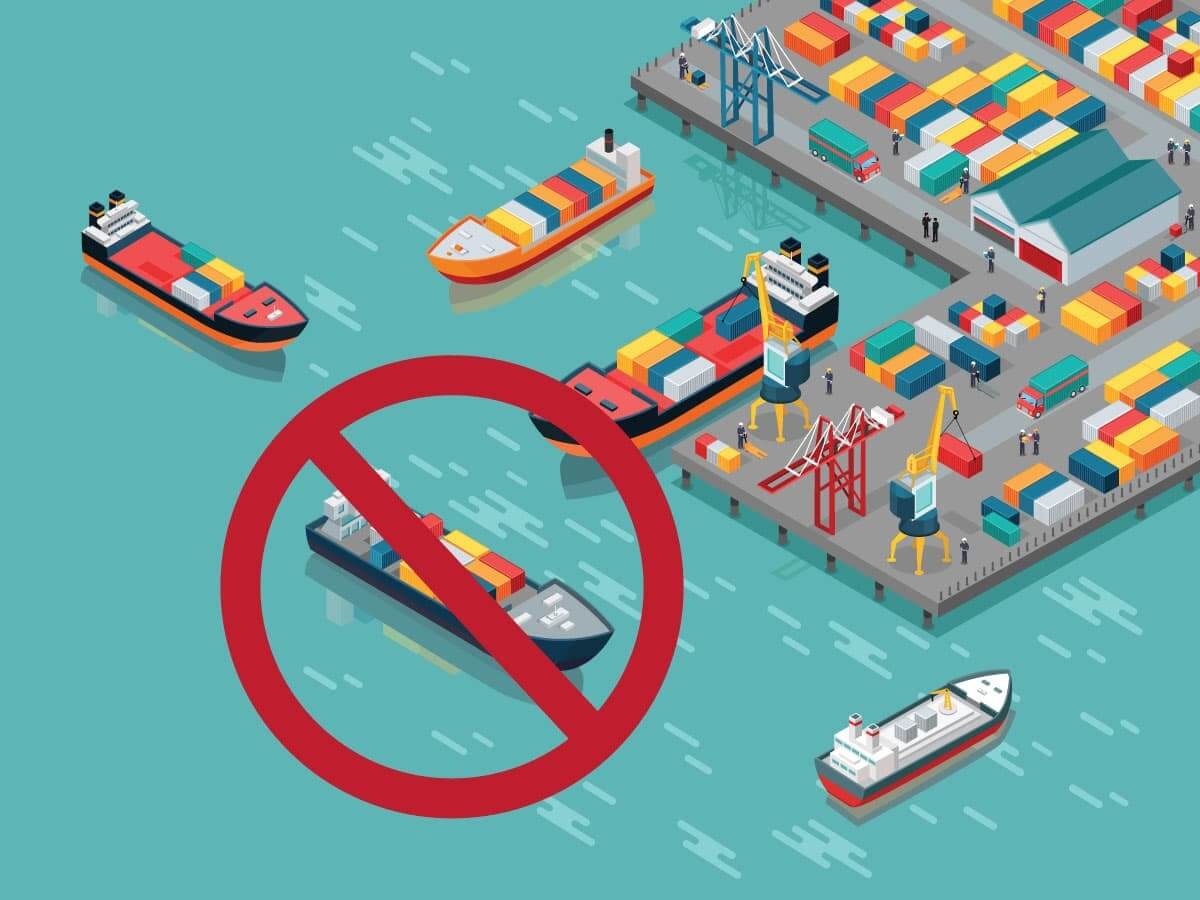
Members of the International Longshoremen’s Association working in ports along the East and Gulf Coast of the United States began a labor strike on October 1, 2024 after negotiations for contract changes fell through. Negotiations have since seen the workers return, but not without financial impact to connected businesses.
Key Takeaway:
Get the details on how importers are affected and what you can do moving forward to keep your business running.
Businesses and importers should be happy to note that the negotiations between the ILA and USMX resulted in a deal that was tentatively ratified January 8, 2025.
The new contract is meant to be in place for the next six years and impacts roughly 25,000 longshoremen working at ports along the east and gulf ports of the United States. Part of the agreement involves the use of semi-automated technology meant to make port services more efficient.
While official ratification may still be some months away, no further disruptions in operations are expected.
Members of the ILA working for the United Maritime Alliance at ports all along the East and Gulf coast are back at work as of Friday, October 4.
To get trade moving again, the union agreed to a contract extension that will carry until January 15, 2025. This was after wage negotiations were tentatively worked out. The fine details of the contract are expected to be finalized by the January deadline.
In the meantime, ports are once again open and ships that were waiting can finally unload cargo. There is certain to be a catch-up period after three days of no movement, during which importers and businesses continue to be affected.
There are 36 ports stretching from Maine to Texas that utilize ILA workers employed by the United States Maritime Alliance (USMX) in some capacity. Of those, 14 ports and their assigned workers, about 45,000 individuals, fall under the Master Contract between the ILA and the USMX.
Please note that while the following list names the major ports affected, others not on this list may be impacted as well.
Billions of dollars worth of commodities pass through these 14 ports on a weekly basis as ingoing and outgoing freight.
Certain ports on this list serve as the main conduits for very specific industries. The Port of Baltimore, as an example, is the number one destination for Roll on/Roll off (RoRo) cargo ships that transport everything from family sedans to combine harvesters.
By itself, the Port of New York/New Jersey operating in Newark handles over $23 billion worth of imports and exports in a single month. That makes it the second-highest capacity port operating in the U.S. after those in California’s San Pedro Harbor.
The Port of Miami is the main avenue for incoming shipments of fresh fruits and vegetables entering from Central and South America as well as the Caribbean. As such, much of their freight is temperature-controlled and therefore on a strict time schedule.
Importers need to be aware of which services are being impacted and which continue to operate. At this time, the port services most affected by the worker strike are:
Since USMX focuses on work with major container ship carrier services, these are the ones most at risk of disruption. Without workers to unload ships, vessels are either waiting in queues offshore or have already diverted to other ports.
In the days leading up to the strike, several vessels made an attempt to unload whatever cargo they could. Unfortunately, it’s been discovered that several thousand containers likely got offloaded at the wrong destination, with ships being more concerned about offloading what they could at whatever port they were closest to at the time.
However, ocean ports are massive operations, not all of them managed by the USMX or their hires. Services that are continuing despite the strike include:
Ports employing non-ILA workers are also still working, though not all of them at full capacity, depending on how many they have. Unfortunately, these ports tend to be smaller and simply aren’t capable of managing all the excess.
Of concern to importers are the major commodities, and therefore industries, that are being affected by a lack of incoming shipments. Specifically, you’ll want to look at shipments that would typically enter through ports on the East Coast or in the Gulf of Mexico.
Based on current shipping trends, the following commodities are most at risk:
Of these, items like fresh produce, seafood, and medicines are considered the most critical. Food stuffs have a limited shelf life, so importers working with these commodities are at greater risk of product loss due to spoilage. Certain medicines face a similar concern, but also represent a commodity that is often in short supply.
Businesses that focus on exports are also being impacted, especially the products that are part of an import/export exchange.
Anything fresh destined to go out of the country for processing or direct sale will be delayed, potentially past the point of being able to export it. Those industries would be forced to find domestic buyers or else face financial loss.
Importers of non-perishable goods may not fear total product loss, but they still have to deal with expensive logistical delays.
Whether the carrier moving their items is waiting for ports to reopen or has already diverted to a secondary destination, the following expenses are likely to increase:
Added charges are going to impact profit margins along the entire supply chain and likely have a ripple effect in the domestic market as well as the foreign one.
Before anyone starts to panic, we want to remind you that international trade with the U.S. is not at a complete halt. Thankfully, West Coast ports are operating at capacity and therefore goods are entering and exiting the country.
While avoiding the complete impact of such a widespread strike may be impossible, there are steps importers can take to protect their business.
Aside from helping you with your customs clearance documents, licensed brokers often work closely with your chosen freight forwarder. That relationship can help when it comes to negotiating new routes, destinations, and even methods of transport.

Keep business flowing with expert guidance
Our 45 Minute Licensed Expert Consulting Will Personally Guide You.
Dealing with the current and after effects of a massive port strike is going to be stressful. You’re worried about your business and may be scrambling to find solutions that balance out the lost time and money these circumstances have created.
USA Customs Clearance wants to help you find those solutions. Our licensed customs brokers offer one-on-one consultations to help importers figure out what they need, how to get it, and the best strategies for carrying the whole process out successfully.
Reach out today to schedule your 1-on-1 Consult with a licensed broker and keep your businesses moving ahead.
Have a direct inquiry? Call us at (855) 912-0406 or complete an online contact form now.
 Copy URL to Clipboard
Copy URL to Clipboard
Add your first comment to this post